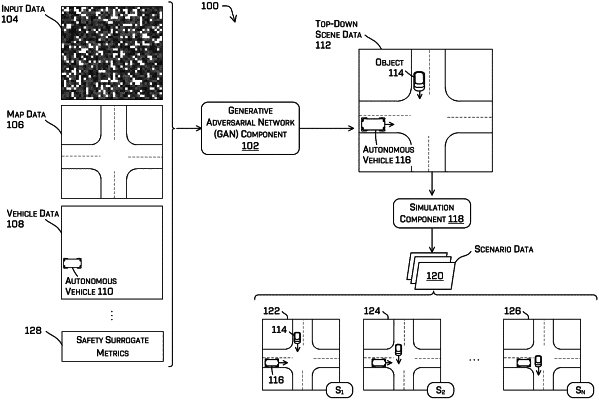| CPC G06T 11/00 (2013.01) [G06F 30/27 (2020.01); G06N 3/045 (2023.01); G06N 3/088 (2013.01)] | 20 Claims |

|
1. A system comprising:
one or more processors; and
one or more non-transitory computer-readable media storing instructions executable by the one or more processors, wherein the instructions, when executed, cause the system to perform operations comprising:
inputting, to a first convolutional neural network (CNN), multi-channel image data and map data of an environment;
generating, using the first CNN and based at least in part on the multi-channel image data and the map data, a generated top-down scene including first occupancy information and first attribute information for generated objects within the generated top-down scene, wherein the generated objects are absent in the multi-channel image data and the map data;
inputting, to a second CNN, scene data comprising the generated top-down scene and a real top-down scene including second occupancy information and second attribute information for one or more real objects within the real top-down scene;
receiving, from the second CNN, binary classification data indicative of whether an individual scene in the scene data is classified as generated or not generated; and
providing the binary classification data as a loss to the first CNN and the second CNN.
|